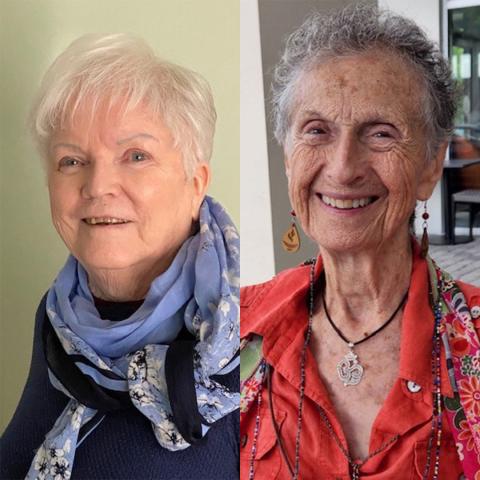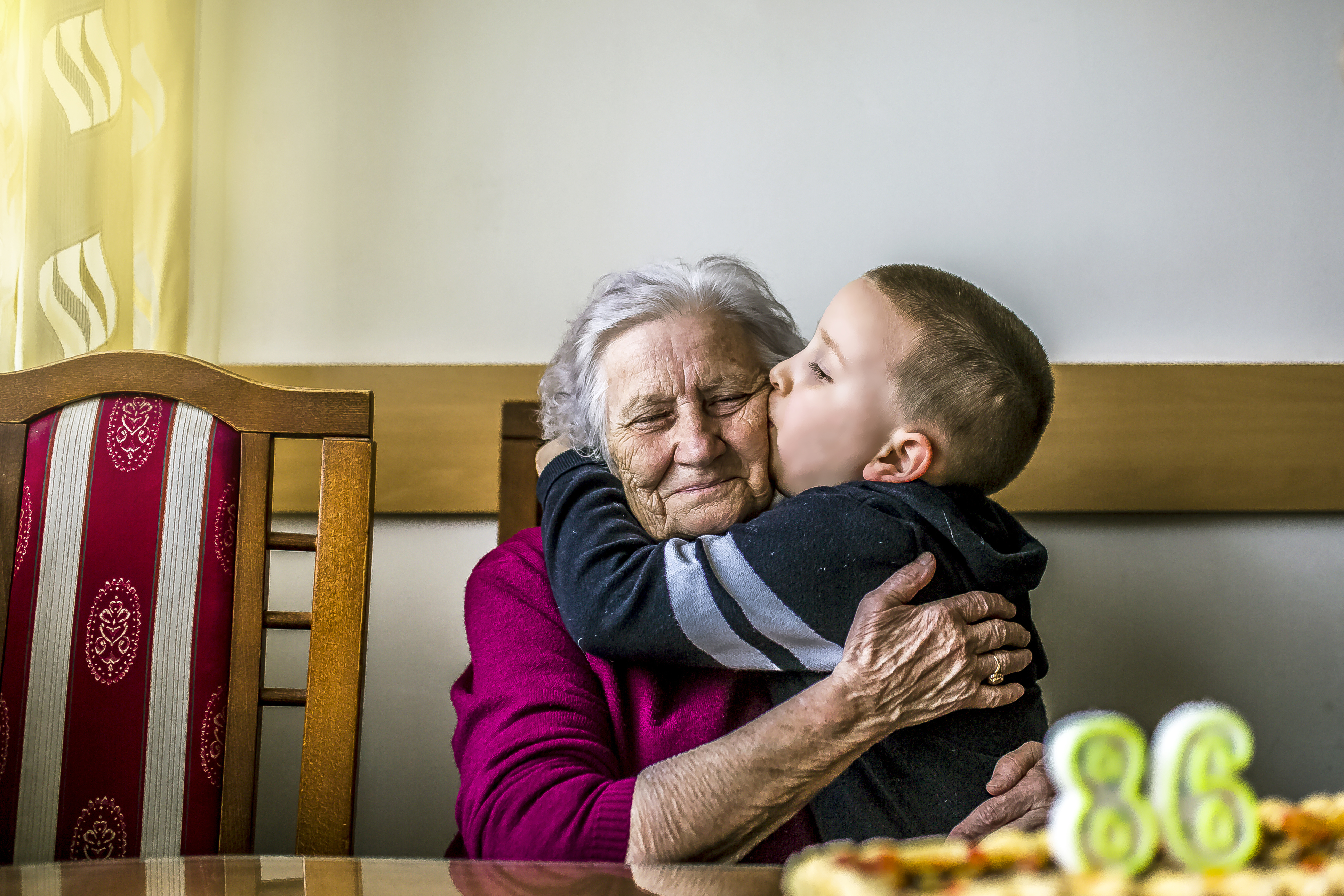Patient Voices: Living With Age-Related Macular Degeneration
Two women living with AMD shared their stories in a recent BrightFocus Chat.
Written By: Lisa Catanese, Freelance Writer



Two women living with AMD shared their stories in a recent BrightFocus Chat.
Written By: Lisa Catanese, Freelance Writer

There are challenges to face, and decisions to be made, when you live with macular degeneration. Two women who are doing just that have shared their experiences and advice in the hope of supporting others with this eye disease.
Maureen Foley of Massachusetts and Sheila Klein of Florida shared their stories during a BrightFocus Chat on Feb. 22. They were both diagnosed with age-related macular degeneration in 2013.
Family history is a common thread that weaves their stories together. Maureen had heard about aunts and uncles with this eye disease, but she said no one talked about it.
“I was totally unfamiliar with macular degeneration,” she said. “It’s been 20 years of hearing of the vision problems with aunts and uncles who couldn’t see, but it didn’t mean anything to me until I was diagnosed in 2013, and it was like, ‘Oh, now I get it.’ I had no idea how they were treated.”
Sheila had a similar experience. “It was really clear to me that my family had AMD, but I was pretty ignorant about it,” she said. “Both of my parents were legally blind by the time they passed (her mom at age 88 and her dad at 96). They were very private about their pain, and they certainly never revealed suffering. My parents were the kind of people who faced whatever came up and got on with life.”
Since no one in their families really discussed having AMD, both women said they were taken aback when they were diagnosed. In Maureen’s case, she knew her vision was declining but just thought she needed a new prescription. After she retired and had more time to take care of herself, she made an appointment with an ophthalmologist.
“She took one look at me – or my eyes – and said, ‘You need to see a retinologist immediately,’” Maureen recalls. “I got (my first) injection that day. I had no idea what was going on.”
Age-related macular degeneration is a leading cause of vision loss. It mainly affects someone’s central vision, which is needed for detailed tasks like reading, driving, and recognizing faces.
There are two forms: dry and wet. The dry form is more common and typically affects vision in both eyes. In 10 to 15 percent of people, the dry form can evolve into wet AMD, which is associated with severe vision loss that can worsen quickly.
There’s currently no cure for AMD, but there are ways to slow its progression. The early stage has no symptoms. In the intermediate stage—when people have mild blurriness or trouble seeing in low light—a special combination of vitamins and minerals, called the AREDS2 formula, may be able to stop it from progressing into late AMD. Wet AMD is treated with drugs injected into the eye and laser treatments to slow its progression.
Sheila started taking the AREDS formula after routine cataract surgery revealed she had dry AMD. “I had no symptoms and was doing the right thing, and 10 years later, all of a sudden, I had the experience of wet macular,” she said. “It was quite a shock. I had believed, because I was doing the AREDS protocol, that I wasn’t going to have to deal with that.”
Both women say that once the shock of having AMD wore off, they were determined to learn more. Maureen felt she was more fortunate than her aunts and uncles because treatment was available to slow the progression of her vision loss. But she soon realized that even with regular injections, her vision continued to decline.
In 2019, Maureen stopped driving, a decision that she describes as “the hardest thing for me to do.” Her vision on the right had deteriorated to the point where she couldn’t see pedestrians or bicyclists on the passenger side, and she knew she risked injuring someone if she needed to turn right.
“I’ll have a situation, all of a sudden, when my vision is less,” she said. “I have had hallucinations. I get flashing lights, bouncing lights, bouncing balls—very, very active vision.”
That same year, Maureen asked the low-vision specialist she was seeing, “Am I blind?” and he replied, “You are legally blind.” For the first time, she cried.
“I knew that was the beginning of a new life and the end of a previous one,” she said. “I was going to have to learn new ways of doing things and readjusting, and I’m still doing it. I will not pretend that it’s easy, because it’s not. It’s learning something new every day or trying to figure out how to do what I used to do.”
When Sheila was told she had wet AMD and needed injections, she said she felt “totally psychologically unprepared.” She had thought that her dry AMD would simply continue to progress slowly. “I just said, ‘I don’t know how I can handle this, because it’s just so shocking.’ (Then I) remembered how my dad did it, and not only did he do it for all the years until he passed, but his vision actually improved. He could see color better after he had his injections.”
Sheila gave herself a pep talk, realizing it was a quality-of-life diagnosis and not a life-threatening one. She did a short relaxing meditation and then told herself she had to get on with it. “And actually, my fear of the injection was a lot worse than the experience of it,” she said.
For others affected by AMD, both women said it’s important to speak up and ask questions to become as informed as possible. Also important is facing challenges with a bit of humor, along with being creative when problem-solving.
For example, Maureen said she was constantly confusing a $1 bill with a $10, and a $5 with a $50—until she realized that if she turned them over, the right corner has a much larger number on it. Now, she said, “I file everything in my wallet kind of upside down, and I’m no longer making those mistakes.”
Also helpful are cell phone apps that can read emails and text messages aloud. Other services, such as the Braille Institute, offer audiobooks that are read aloud. The National Library Service, too, offers book clubs and resources for people with impaired vision or vision loss.
Resources like these, which weren’t available to their family members who had AMD, can be life-changing, Maureen and Sheila pointed out. “Without them, I think it could be pretty depressing,” Maureen added. “But I like technology. For me, it’s like having a new toy.”
Maureen and Sheila are active in the AMD Community Circle, a monthly virtual program from BrightFocus Foundation that’s designed to provide a place where people with macular degeneration can join together to share tips, ask questions, and build community.
BrightFocus is dedicated to reaching millions of people worldwide through its public outreach and education efforts around brain and eye health. These efforts include BrightFocus Chats—such as the one in which Maureen and Sheila participated—which are free, twice-a-month audio programs connecting people with vision diseases to doctors and researchers, as well as virtual community groups, public service announcements, awareness outreach campaigns, and special events.
Both women frankly state they’ve had to face tough times through it all. “One of my spiritual mantras is ‘show up, give your all, and then be present as fully as you can, and then let go,’” Sheila said. “I’ve had to let go of a lot.”
Maureen agrees. “I will tell you that there are days that I wish it would all go away and I didn’t have to deal with it anymore,” she said. “But unfortunately, that’s not the case. You have to keep plugging through, and you have to keep trying. If a door closes, there’s always another door—or there’s a window.”
Listen to a recording of the conversation with Maureen and Sheila or read the transcript.
BrightFocus Foundation is a premier global nonprofit funder of research to defeat Alzheimer’s, macular degeneration, and glaucoma. Through its flagship research programs — Alzheimer’s Disease Research, Macular Degeneration Research, and National Glaucoma Research— the Foundation has awarded nearly $300 million in groundbreaking research funding over the past 51 years and shares the latest research findings, expert information, and resources to empower the millions impacted by these devastating diseases. Learn more at brightfocus.org.
Disclaimer: The information provided here is a public service of BrightFocus Foundation and is not intended to constitute medical advice. Please consult your physician for personalized medical, dietary, and/or exercise advice. Any medications or supplements should only be taken under medical supervision. BrightFocus Foundation does not endorse any medical products or therapies.
